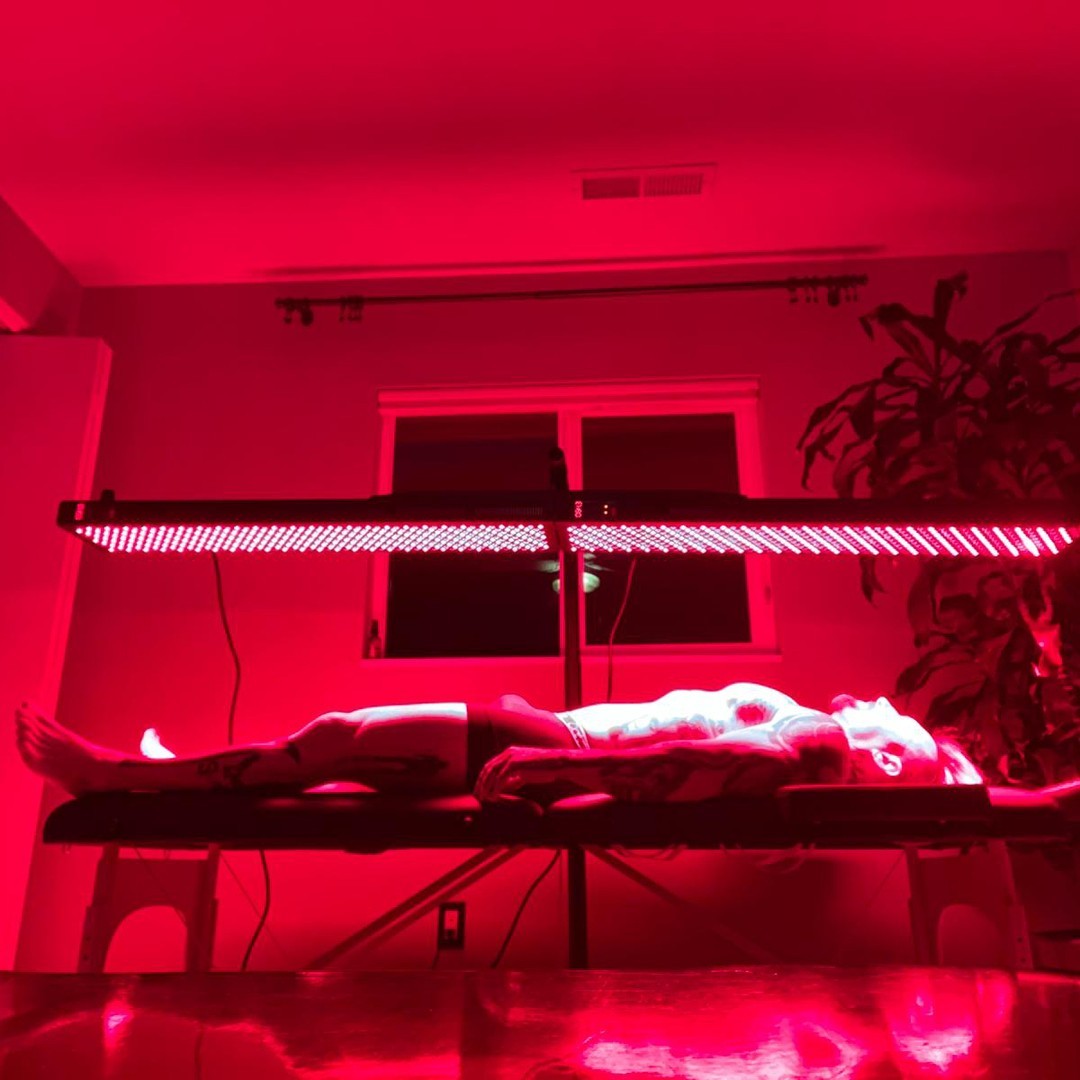![]() Free Shipping
Free Shipping ![]() Buy Now, Pay Later
Buy Now, Pay Later ![]() Eligible
Eligible
Skincare and Red Light Therapy: Myths vs Science

Red light therapy has exploded in popularity over the past few years, with everyone from skincare enthusiasts to dermatologists weighing in on its potential. Walk into any wellness boutique and you’ll likely see glowing red panels promising to transform your complexion. Scroll through social media and you’ll find influencers showcasing their at-home LED devices with impressive before-and-after photos.
But here’s the question that matters: how much of this buzz is backed by real science, and how much is just clever marketing?
This guide cuts through the noise to explore what red light therapy actually does for your skin, backed by peer-reviewed research and expert insights. Whether you’re dealing with fine lines, acne, or considering it for red light therapy hyperpigmentation concerns, you’ll learn what genuinely works and what’s worth your investment.
What is Red Light Therapy? Understanding the Science
Red light therapy, also known as low-level laser therapy or photobiomodulation, involves exposing your skin to specific wavelengths of red or near-infrared light, typically between 630-850 nanometers. Unlike the harsh UV rays from tanning beds that damage your skin, these longer wavelengths are absorbed by your cells and trigger beneficial biological responses.
Here’s what happens at the cellular level: when red and near-infrared light penetrate your skin, they’re absorbed by mitochondria, the tiny powerhouses inside your cells. This absorption stimulates increased production of ATP (adenosine triphosphate), which is essentially cellular energy. With more energy available, your cells can work more efficiently at healing, regenerating, and producing the proteins that keep skin looking youthful.
The key mechanisms include:
- Enhanced collagen synthesis for firmer, more elastic skin
- Reduced inflammation that contributes to redness and breakouts
- Improved tissue repair and wound healing
- Increased blood circulation to deliver nutrients
Clinical trials published in the Journal of Clinical and Aesthetic Dermatology have demonstrated measurable improvements in skin texture and appearance following consistent red light therapy treatments. This isn’t pseudoscience – it’s photobiology with a growing body of evidence.
Busting the Most Common Myths
Despite solid scientific backing, red light therapy has accumulated its share of misconceptions. Let’s clear up what’s fact and what’s fiction.
Myth: Red light therapy burns or damages your skin like UV exposure.
This is perhaps the biggest misunderstanding. Red light emits non-ionizing wavelengths that don’t cause DNA damage, sunburn, or increase skin cancer risk. A 2018 review in Seminars in Cutaneous Medicine and Surgery confirmed RLT’s safety profile when used appropriately. You’re not getting a tan or risking sun damage – you’re delivering therapeutic wavelengths that cells can use for regeneration.
Myth: You’ll see dramatic results after one session.
If only! Real improvements require consistency. Most clinical studies showing visible benefits involved treatments 3-5 times weekly for 8-12 weeks. Think of it like going to the gym – one workout won’t transform your body, but consistent effort over time creates meaningful change.
Myth: More exposure equals better results.
Here’s where people often go wrong. Overexposure can actually reduce efficacy or cause temporary irritation and redness. Your cells can only absorb and utilize so much light energy at once. Following device-specific guidelines for duration and frequency is essential for optimal results.
The Evidence-Based Benefits: What Science Shows
When you look past the marketing claims and dive into peer-reviewed research, red light therapy demonstrates several legitimate benefits for skin health.
Anti-Aging and Collagen Production
One of the most well-documented benefits is enhanced collagen synthesis. A 2014 clinical trial found participants experienced a 31% improvement in skin texture and 36% increase in collagen density after 12 weeks of consistent treatment. Red light stimulates fibroblast activity – these are the cells responsible for producing collagen and elastin, the structural proteins that keep skin firm and supple.
The visible results include reduced fine lines, improved skin tone, and enhanced overall texture. While it won’t erase deep wrinkles overnight, the cumulative effects over several months can be genuinely impressive.
Acne and Inflammation Control
Red light targets sebaceous glands, helping regulate oil production and reduce the inflammation that makes acne worse. It’s particularly effective when combined with blue light therapy, which kills acne-causing bacteria. Studies published in Photomedicine and Laser Surgery Journal demonstrate significant improvements in inflammatory acne lesions with regular treatment.
Unlike harsh topical treatments that can irritate sensitive skin, red light offers a gentler approach to managing breakouts. Many dermatologists now recommend it as a complementary treatment alongside conventional acne therapies.
Addressing Hyperpigmentation and Skin Tone
Here’s where the research gets interesting but requires realistic expectations. Red light therapy may help fade post-inflammatory hyperpigmentation by regulating melanin activity and promoting more even skin turnover. A 2021 review in Frontiers in Medicine noted promising preliminary results, though larger human studies are still ongoing.
The most effective approach combines red light with topical antioxidants and consistent sun protection. It’s not a magic eraser for dark spots, but it can support your skin’s natural healing process when used as part of a comprehensive routine.
How to Actually Use Red Light Therapy Effectively
Knowing the science is one thing – implementing it correctly is another. Here’s your practical framework for incorporating red light therapy into your skincare routine.
The Essential Do’s:
- Always cleanse your skin first to remove makeup, oils, or products that might block light penetration
- Use device-specific durations, typically 10-20 minutes per session, 3-5 times weekly
- Apply antioxidant serums like vitamin C immediately after treatment to enhance results
- Wear sunscreen daily, as increased cell turnover makes skin more photosensitive
The Critical Don’ts:
- Don’t use red light immediately following aggressive exfoliation or chemical peels – give your skin recovery time
- Don’t combine with photosensitizing medications unless your dermatologist approves
- Don’t assume more is better – stick to recommended exposure times
Think of red light therapy as a tool that works best within a holistic skincare approach, not as a standalone miracle treatment.
Choosing the Right Device
Not all red light devices are created equal, and this is where many people waste money on ineffective products. When evaluating options, focus on three critical specifications.
First, wavelength accuracy matters. Look for devices that emit 630-660 nm (red light) and 810-850 nm (near-infrared light). These specific ranges have the most research supporting their effectiveness. Second, check the irradiance level – you need 20-100 mW/cm² for adequate cellular stimulation. Anything less won’t deliver therapeutic benefits. Third, prioritize FDA-cleared devices, which indicates tested safety and performance standards.
Professional treatments at dermatology offices or medical spas typically use more powerful devices than at-home options, but quality home devices can absolutely deliver results with consistent use. Start with lower exposure times and gradually increase based on how your skin responds.
Who Should Exercise Caution
While red light therapy has an excellent safety profile for most people, certain situations warrant extra consideration or professional guidance.
Consult a dermatologist before starting if you:
- Have photosensitive conditions like lupus
- Are using retinoids or tetracycline antibiotics
- Are pregnant (limited data means caution is advised)
- Have a history of skin cancer
These aren’t necessarily absolute contraindications, but professional guidance ensures you’re using the therapy safely given your specific circumstances.
What Science Still Doesn’t Know
Transparency matters when discussing any treatment, so let’s address the limitations. Long-term effects on melanocyte activity need more research, particularly for darker skin tones. Not all consumer devices deliver sufficient energy for medical-grade results – some are essentially expensive mood lighting. Clinical data for certain applications, including extensive use for hyperpigmentation, remains preliminary despite promising early results.
The Journal of Cosmetic and Laser Therapy notes that while current evidence is encouraging, larger long-term studies would strengthen our understanding of optimal protocols and potential risks.
Combining Red Light Therapy with Traditional Skincare
Dermatologists increasingly recommend using red light therapy as a complementary treatment that enhances conventional skincare rather than replacing it entirely. According to insights from the American Academy of Dermatology, the most impressive results come from strategic combinations.
Consider pairing red light with retinol on alternating days to maximize cell turnover without irritation. Use hyaluronic acid immediately after treatment to lock in hydration. Apply niacinamide to calm any temporary redness and strengthen your skin barrier. These combinations create synergistic effects that outperform any single treatment alone.
The Bottom Line: Light That Heals When Used Wisely
Red light therapy isn’t magic, and it’s not a replacement for proven skincare fundamentals like sun protection, proper cleansing, and appropriate moisturization. What it does offer is a scientifically-backed, non-invasive tool for supporting your skin’s natural regenerative processes.
The evidence shows genuine benefits for collagen production, inflammation reduction, and overall skin health when used consistently and correctly. Success requires patience, proper technique, and realistic expectations. You won’t wake up with transformed skin after one session, but three months of consistent use might surprise you with measurable improvements.
Combined with dermatologist-approved skincare and healthy lifestyle habits, red light therapy can become one of your most effective tools for maintaining healthy, resilient skin well into the future. The key lies not in chasing miracles, but in understanding the science and applying it thoughtfully to your unique skincare journey.






